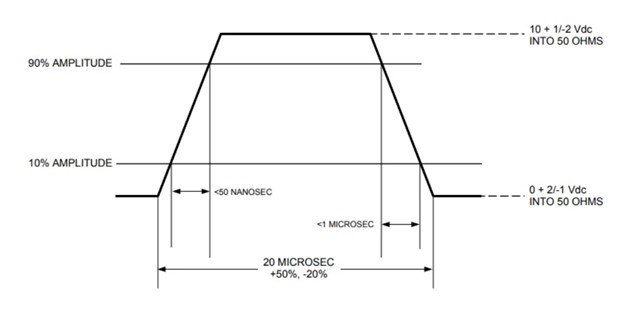Other Parts Discussed in Thread: THS3491, UCC27537, TINA-TI
Hello,
I need to design a 1PPS driver with rising edges <50ns and driving a 10V voltage through a 50ohms adapter (the total supply is therefore 20V due to the bridge divider).
I found that the THS3095 component could drive a 50-ohm line. However, the current required for the voltage level is 200mA. This component doesn't seem to be able to supply this current.
Is there an amplifier that can achieve these specs?
Thanks in advance,
Best Regards,
Louis







